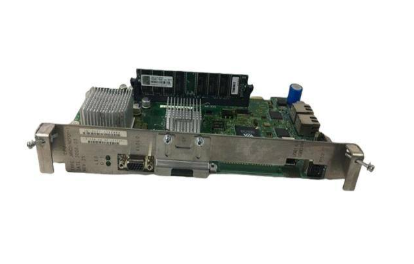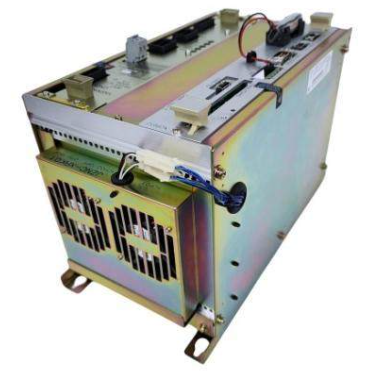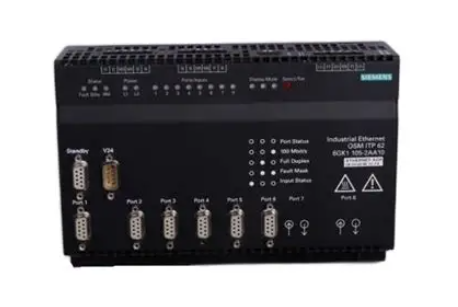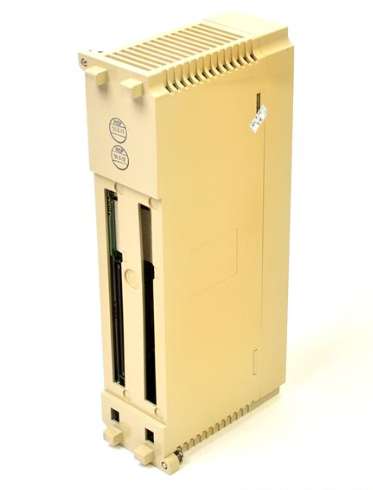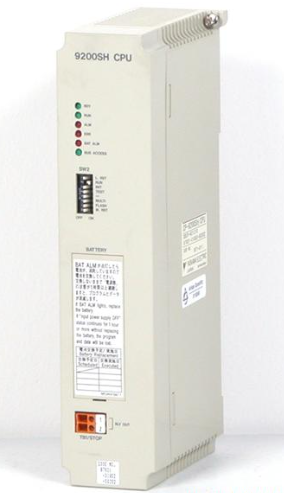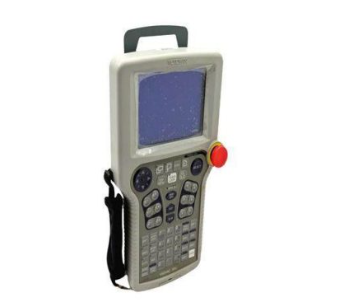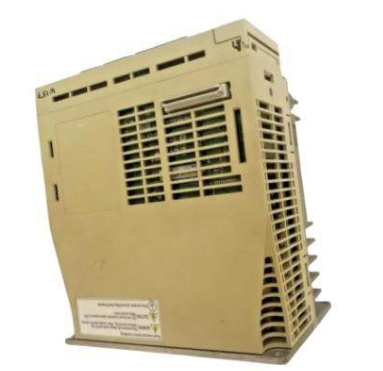AB1642 Module Manual MicroLogix 1500 & CompactLogix Resolver Interface Module
AB1642 Module Manual MicroLogix 1500 & CompactLogix Resolver Interface Module
Modulübersicht: Das Modul 1642 nutzt eine von Allen-Bradley lizenzierte Schnittstellentechnologie und wird direkt in einen Steckplatz in einem MicroLogix 1500- oder CompactLogix-SPS-System eingesteckt. Es kommuniziert über das dem Steckplatz zugewiesene E/A-Register, kann für die Verwendung von zwei Single-Resolver-Sensoren oder einem Dual-Resolver-Sensor konfiguriert werden und kann in bestimmten Konfigurationen die Nachlaufzeit von Kanal 1 überwachen.
Installation des Moduls
Hardware-Installation: Trennen Sie vor der Installation die Stromversorgung, um sicherzustellen, dass das Systemnetzteil über eine ausreichende Stromkapazität verfügt, setzen Sie das Modul ein und befestigen Sie es an den Schienen, bringen Sie die Endkappe am Modul ganz rechts an, und halten Sie das Modul nicht weiter als 7 Steckplätze von der Stromversorgung entfernt.
Softwarekonfiguration: In einem CompactLogix-System kann eine generische Konfiguration oder eine spezifische Konfiguration für RSLogix 5000 V20 und höher verwendet werden; in einem MicroLogix 1500-System werden Vorgänge im Zusammenhang mit der E/A-Konfiguration im RSLogix 500-Projekt ausgeführt.
Modulspezifikationen: Der Strombedarf beträgt 220mA @5Vdc typisch, 360mA @5Vdc maximal bei kurzgeschlossener Referenzspannung; die Zeiten für die Positionsaktualisierung und die Aktualisierung der Backplane variieren mit der Frequenz der Referenzspannung. Kompatibel mit einer breiten Palette von AMCI-Resolver-Sensoren, einige andere Sensoren können über das RM-Referenzmodul angepasst werden. Mehrere programmierbare Parameter, automatische Datenaktualisierung, Modulprogrammierung durch Programmierzyklen, Programmspeicherung im EEPROM. Betriebstemperatur 0 - 60°C, relative Luftfeuchtigkeit 5 - 95% (nicht kondensierend), Lagertemperatur - 40 - 85°C.
Programmierbare Parameter: Umfasst Parameter wie Anwendungsvoreinstellung, Zählrichtung, Sensor-Fehlerverriegelung, Tachometerreaktion, Deaktivierung von Kanal 2, Referenzspannungsfrequenz, Drehtransformatortyp, Skalenendwert, Voreinstellwerte, Sensortyp und Anzahl der Umdrehungen usw., die zur Konfiguration des Moduls eingestellt werden können und in einem nichtflüchtigen EEPROM gespeichert werden.
Backplane-Programmierung: Die Programmierung erfolgt über Eingangs- und Ausgangsworte unter Verwendung des Handshake-Protokolls zur Steuerung des Empfangs von Programmierdaten. Der Programmierzyklus besteht aus sechs Schritten. Der Programmierzyklus besteht aus sechs Schritten. Die Parameter werden im EEPROM gespeichert und können nur begrenzt oft geschrieben werden. Eingangs- und Ausgangsregister haben in verschiedenen Konfigurationen unterschiedliche Datenformate, und Statuswörter werden zur Anzeige verschiedener Fehler und Statusmeldungen verwendet.
Features of the resolver interface of the 1642 module
Connection characteristics: The 18-pin connector used to connect the resolver has several internal pins with specific functions. For example, pin 1 is located in the upper left corner and pins 1, 2, 15 and 16 are ground pins for connecting to the cable shield and reducing electrical noise interference. The function of pins 3 - 10 varies with the type of resolver. The two R1 and two R2 signals of the module are internally connected to facilitate the signal connection to the resolver and ensure the stability of the signal transmission.
Supported types: Compatible with a wide range of resolvers, it can be used with two AMCI single resolvers (e.g. HT - 20 series, H25 - XX series, HT - 20 - X series), or connected to an AMCI dual resolver (e.g. HTT - 20 - X series) or an Autotech dual resolver (RL210 128 turn). For other types of resolver, support is also possible through the use of the AMCI RM reference module, which significantly extends the range of applications.
Electrical characteristics: The resolver is supplied with a reference voltage which can be selected between 5kHz and 2.5kHz. The default value of 5kHz is suitable for most applications, and a setting of 2.5kHz improves system performance when cable lengths exceed 100ft. Rotary transformer signals are low-voltage, low-power signals, the wiring should follow the A - B wiring guidelines, treated as Category 2 cable, and can not be installed in the same pipeline with the AC power line or high-power AC and DC I/O lines, to avoid electromagnetic interference affecting the signal transmission.
Troubleshooting features: Sensor fault detection is available to detect faults caused by improper wiring, electrical noise, or sensor damage. By default, sensor faults are not latched and fault conditions are automatically cleared when a valid signal is detected. However, if transient faults need to be captured reliably, the Sensor Fault Lockout parameter can be enabled, after which a Clear Error command needs to be sent to clear the fault, making it easier for the user to troubleshoot and handle the fault.
Data Processing Features: Converts and transmits rotary transformer position and speed data to the PLC; for single rotary transformer configurations, position (in counts) and speed (RPM) for channels 1 and 2, as well as stopping time and brake application position data for channel 1. For dual resolver configurations, position data is reported in a specific format that splits the position data into two words for easy processing and storage by the PLC, meeting the data requirements of different control scenarios.
- EMERSON
- Honeywell
- CTI
- Rolls-Royce
- General Electric
- Woodward
- Yaskawa
- xYCOM
- Motorola
- Siemens
- Rockwell
- ABB
- B&R
- HIMA
- Construction site
- electricity
- Automobile market
- PLC
- DCS
- Motor drivers
- VSD
- Implications
- cement
- CO2
- CEM
- methane
- Artificial intelligence
- Titanic
- Solar energy
- Hydrogen fuel cell
- Hydrogen and fuel cells
- Hydrogen and oxygen fuel cells
- tyre
- Chemical fiber
- dynamo
- corpuscle
- Pulp and paper
- printing
- fossil
- FANUC
- Food and beverage
- Life science
- Sewage treatment
- Personal care
- electricity
- boats
- infrastructure
- Automobile industry
- metallurgy
- Nuclear power generation
- Geothermal power generation
- Water and wastewater
- Infrastructure construction
- Mine hazard
- steel
- papermaking
- Natural gas industry
- Infrastructure construction
- Power and energy
- Rubber and plastic
- Renewable energy
- pharmacy
- mining
- Plastic industry
- Schneider
- Kongsberg
- NI
- Wind energy
- International petroleum
- International new energy network
- gas
- WATLOW
- ProSoft
- SEW
- wind
- ADVANCED
- Reliance
- YOKOGAWA
- TRICONEX
- FOXBORO
- METSO
- MAN
- Advantest
- ADVANCED
- ALSTOM
- Control Wave
- AB
- AMAT
- STUDER
- KONGSBERG
- MOTOROLA
- DANAHER MOTION
- Bently
- Galil
- EATON
- MOLEX
- Triconex
- DEIF
- B&W
- ZYGO
- Aerotech
- DANFOSS
- KOLLMORGEN
- Beijer
- Endress+Hauser
- MOOG
- KB
- Moxa
- Rexroth
- YAMAHA
- Johnson
- Westinghouse
- WAGO
- TOSHIBA
- TEKTRONIX
- BENDER
- BMCM
- SMC


Email:wang@kongjiangauto.com

